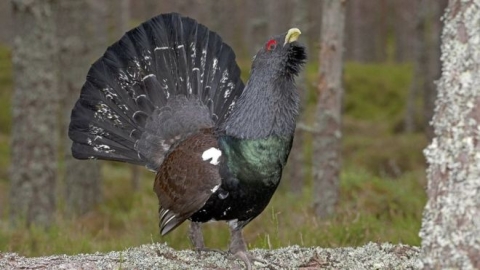Capercaillie conservation effort gains significant funding

Major efforts are underway to boost numbers of one of Scotland's rarest birds. Capercaillie are the largest grouse species in the world and have been living in Scotland's pine forests since the last Ice Age. The Scottish Gaelic name for this species, capall-coille, means ‘horse of the forest.’ They are found in the pinewoods of northern Scotland and it is estimated there are fewer than 1,000. About 80% are found in Strathspey in the Cairngorms.
The population has halved in recent years due to a variety of threats including habitat loss, fragmentation, and birds flying into deer fencing. This is not the first time the Capercaillie has been under threat. New stocks of the species had to be introduced in Scotland in 1785 when the bird faced extinction. Now £2m in funding has been made available from the National Lottery Heritage Fund to the Cairngorms Capercaillie Project.
Their aim is to set up community-led conservation schemes that will improve capercaillie habitat in pinewoods, raising awareness about how to avoid disturbing the birds and marking deer fences to make them more visible. Carrbridge (Scottish Gaelic: Drochaid Chàrr), south of Inverness, is already piloting a similar community project.
Image above: Capercaillie courtesy of Cairngorms Capercaillie Project.





